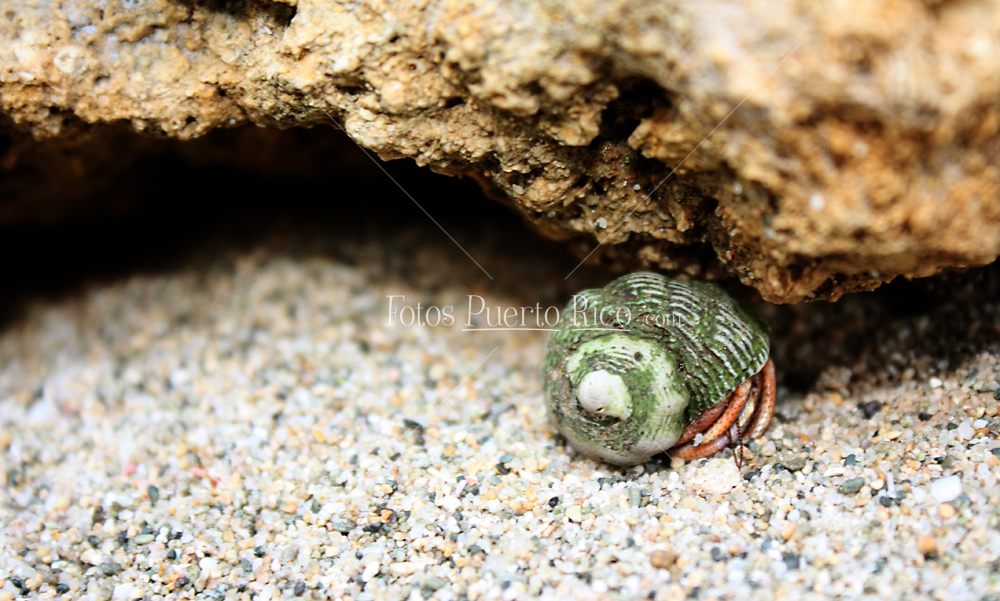When you think about Puerto Rico, the first things that come to mind might be its stunning beaches, vibrant culture, and rich history. However, beneath the crystal-clear waters lies a world filled with incredible marine life, including the remarkable Molusco Puerto Rico. These fascinating creatures are not only vital to the ecosystem but also hold cultural and scientific significance. In this article, we'll dive deep into the world of mollusks found in Puerto Rico, exploring their importance, diversity, and ecological roles.
Puerto Rico's marine ecosystem is home to a wide variety of mollusks, which play a crucial role in maintaining the balance of the ocean's environment. From the colorful conch shells to the mysterious octopuses, these creatures are essential to the health of the marine habitats surrounding the island. As you explore the waters of Puerto Rico, you'll encounter an incredible array of mollusks that have adapted to thrive in this unique environment.
This article will provide an in-depth look at the Molusco Puerto Rico, their significance to the island's ecosystem, and how they contribute to the global biodiversity. We'll also discuss conservation efforts, fascinating facts, and how you can help protect these vital marine organisms. Whether you're a marine biologist, a nature enthusiast, or simply curious about the underwater world, this article is sure to captivate your interest.
Read also:Kevin Contreras The Rising Star In The Entertainment Industry
Table of Contents
- What is Molusco Puerto Rico?
- Biodiversity of Molusco Puerto Rico
- Ecological Role of Molusco Puerto Rico
- Conservation Efforts for Molusco Puerto Rico
- Cultural Significance of Molusco Puerto Rico
- Types of Mollusks in Puerto Rico
- Scientific Research on Molusco Puerto Rico
- Environmental Threats to Molusco Puerto Rico
- Tips for Explorers: How to Observe Molusco Puerto Rico Safely
- Conclusion
What is Molusco Puerto Rico?
Molusco Puerto Rico refers to the diverse group of mollusks found in the waters surrounding the island of Puerto Rico. These creatures, which include snails, clams, octopuses, and squids, are a vital part of the marine ecosystem. Mollusks are characterized by their soft bodies, often protected by hard shells. In Puerto Rico, mollusks inhabit various environments, from shallow coral reefs to deep ocean trenches.
According to the World Register of Marine Species, Puerto Rico is home to over 500 species of mollusks, making it one of the most biodiverse regions in the Caribbean. These creatures are not only fascinating to observe but also play a critical role in maintaining the health of the marine environment.
Biodiversity of Molusco Puerto Rico
The biodiversity of Molusco Puerto Rico is staggering. From the vibrant Queen Conch (Strombus gigas) to the elusive chambered nautilus, these creatures display an incredible range of adaptations to their environment. The diversity of mollusks in Puerto Rico is a result of the island's unique geography, which provides a variety of habitats for these organisms to thrive.
Factors such as water temperature, salinity, and nutrient availability contribute to the rich biodiversity of mollusks in Puerto Rico. Additionally, the island's proximity to the Atlantic Ocean and the Caribbean Sea creates a perfect blend of marine conditions for these creatures to flourish.
Ecological Role of Molusco Puerto Rico
Molusco Puerto Rico plays a crucial role in maintaining the ecological balance of the marine environment. As filter feeders, bivalves like clams and mussels help purify the water by removing excess nutrients and particles. Gastropods, such as snails, contribute to the breakdown of organic matter, while cephalopods like octopuses and squids serve as both predators and prey in the food chain.
Furthermore, mollusks are essential indicators of environmental health. Changes in mollusk populations can signal shifts in the ecosystem, making them valuable tools for scientists studying the effects of climate change and pollution on marine life.
Read also:Madelen Sine A Rising Star In The Music Industry
Conservation Efforts for Molusco Puerto Rico
Conservation efforts for Molusco Puerto Rico are vital to preserving the island's marine biodiversity. Organizations such as the Puerto Rico Department of Natural and Environmental Resources (DNER) and the National Oceanic and Atmospheric Administration (NOAA) are working to protect these creatures and their habitats.
Key conservation initiatives include the establishment of marine protected areas, sustainable fishing practices, and public education programs. By raising awareness about the importance of mollusks, these efforts aim to ensure the long-term survival of Molusco Puerto Rico and the ecosystems they support.
Cultural Significance of Molusco Puerto Rico
Molusco Puerto Rico holds significant cultural importance for the people of the island. For centuries, mollusks have been a vital food source for indigenous communities, providing sustenance and economic opportunities. The shells of certain mollusks, such as conchs, are also used in traditional crafts and ceremonies.
In modern times, Molusco Puerto Rico continues to play a role in the island's cultural identity. Festivals and events celebrating marine life, including mollusks, help preserve the connection between the people of Puerto Rico and their natural surroundings.
Types of Mollusks in Puerto Rico
Gastropods
Gastropods, or snails, are one of the most common types of mollusks found in Puerto Rico. These creatures are characterized by their spiral shells and muscular foot, which they use to move across surfaces. Some notable gastropods in Puerto Rican waters include the Queen Conch, Fighting Conch, and various species of sea slugs.
- Queen Conch: A large marine snail known for its edible meat and beautiful shell.
- Fighting Conch: A smaller conch species that is often found in shallow waters.
- Sea Slugs: Vibrantly colored creatures that lack a shell and are often seen on coral reefs.
Bivalves
Bivalves, such as clams and mussels, are another important group of mollusks found in Puerto Rico. These creatures have two hinged shells and are filter feeders, helping to maintain water quality. Common bivalves in Puerto Rican waters include the Caribbean Cockle and the Mangrove Clam.
- Caribbean Cockle: A small, edible clam found in sandy areas.
- Mangrove Clam: A species that thrives in mangrove ecosystems.
Cephalopods
Cephalopods, including octopuses, squids, and cuttlefish, are among the most fascinating mollusks in Puerto Rico. These intelligent creatures are known for their ability to change color and shape, allowing them to camouflage themselves from predators and prey. Key cephalopods in Puerto Rican waters include the Caribbean Reef Octopus and the Caribbean Squid.
- Caribbean Reef Octopus: A highly intelligent species that lives in coral reefs.
- Caribbean Squid: A fast-swimming predator found in deeper waters.
Scientific Research on Molusco Puerto Rico
Scientific research on Molusco Puerto Rico is ongoing, with researchers studying various aspects of these creatures, including their biology, behavior, and ecological roles. Recent studies have focused on the effects of climate change on mollusk populations, as well as the potential for mollusks to be used in biotechnology applications.
Collaborations between universities, government agencies, and non-profit organizations are driving advancements in our understanding of Molusco Puerto Rico. These efforts are essential for developing effective conservation strategies and ensuring the long-term survival of these vital marine organisms.
Environmental Threats to Molusco Puerto Rico
Molusco Puerto Rico faces numerous environmental threats, including climate change, pollution, and habitat destruction. Rising ocean temperatures and acidification are affecting the growth and survival of mollusk populations, while plastic pollution and overfishing are further exacerbating the problem.
Efforts to mitigate these threats include reducing carbon emissions, implementing stricter pollution controls, and promoting sustainable fishing practices. By addressing these challenges, we can help protect Molusco Puerto Rico and the ecosystems they inhabit.
Tips for Explorers: How to Observe Molusco Puerto Rico Safely
If you're planning to explore the underwater world of Molusco Puerto Rico, here are some tips to ensure a safe and responsible experience:
- Respect marine life by observing from a distance and avoiding touching or disturbing the creatures.
- Use reef-safe sunscreen to protect coral reefs and other marine habitats.
- Dispose of waste properly and avoid leaving any trash behind.
- Support local conservation efforts by participating in beach cleanups and educational programs.
Conclusion
Molusco Puerto Rico represents a fascinating and vital component of the island's marine ecosystem. From their diverse forms and functions to their cultural and scientific significance, these creatures play a crucial role in maintaining the health of the ocean environment. By understanding the importance of mollusks and supporting conservation efforts, we can help ensure their survival for future generations.
We invite you to explore the world of Molusco Puerto Rico further by reading related articles, sharing this content with others, or leaving your thoughts in the comments section below. Together, we can make a difference in protecting these incredible marine organisms and the ecosystems they support.


